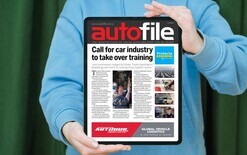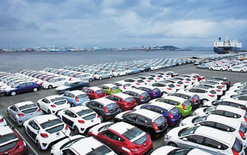Genter dismisses fears over clean-car discounts

The government is defending its clean-car discount plans following fears the scheme will reward thousands of vehicles with low safety ratings.
Julie Anne Genter, the Associate Minister of Transport, says the government is striving to find a way to avoid a conflict between applying safety standards to cars and promoting low-emissions vehicles.
Her comments come after the NZTA raised concerns with the Ministry of Transport (MoT) over the feebate scheme whereby consumers would pay fees on high-emitting vehicles when first registered in New Zealand – or get discounts on greener models. The discounts are part of the clean-car policies Genter announced in July 2019 to reduce carbon dioxide (CO2) emissions from the nation’s light-vehicle fleet.
Genter, pictured above, says the NZTA is keen to see the government “work to ensure that our promoting low-emissions vehicles would not result in a proliferation of unsafe vehicles on the road”.
“No final decisions have been made on the government's clean-car proposal,” she told parliament on November 7. She later added: “We can have safe vehicles that are also low-emissions vehicles, happily.”
Her remarks also followed questioning from National MP Chris Bishop, who asked if it was “possible under the government’s clean-car discount proposal for cars that receive a discount to be one and two-star rated”. He highlighted the 2013 Suzuki Swift as a car that might be entitled to the $800 subsidy despite having a poor safety score on the government’s Rightcar website.
Genter said while a government discussion document about the clean-car scheme lists the 2013 Swift as having tailpipe emissions that could receive the discount, it “is only an example of the cars that are already on the road in New Zealand, not the cars that will be imported post-2020”.
“The Rightcar website identifies 37 model variants of the 2013 Suzuki Swift,” she said. “Some of these model variants are not rated. Some have a one-star rating, some have a two-star rating. I note other 2013 vehicle models identified in the discussion document as having low-enough tailpipe emissions to receive a discount have a variety of ratings. For example, safety-star ratings for the 2013 Toyota Corolla range from one to five stars. The same applies to the Nissan Tiida, while others are completely unrated.”
Genter said the MoT had a number of concerns about the NZTA’s proposal to use star ratings as the basis for New Zealand’s vehicle regulatory regime, “because the data used to inform star ratings – particularly for the used-car safety ratings – is not sufficiently comprehensive or robust enough to support regulation”.
“Not all cars are rated and, therefore, we are pursuing measures like electronic stability control, which will apply to all used cars imported from 2020,” she added. “The Rightcar website notes that cars with ESC, which will be mandatory for used cars from next year, are a ‘safer choice’.”





